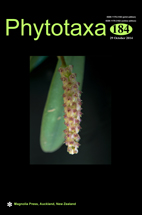Abstract
Greeneria saprophytica sp. nov. is described from fallen Syzygium cumini leaves collected in northern Thailand. The genus Greeneria is monotypic and represented by the type species G. uvicola. The novelty and placement of G. saprophytica is confirmed based on phylogenetic analyses of the 28S nuclear large subunit DNA (nuLSU). The new species differs from G. uvicola in the dimensions of acervular conidiomata, conidiogenous cells and conidia. The phialide collarette with a serrate margin, a rare feature in conidial fungi, is characteristic of the genus.

